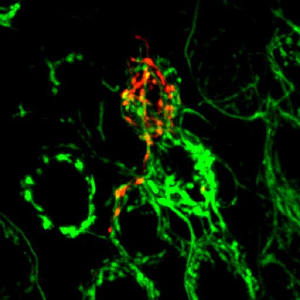The synaptic connections between neurons undergo continuous structural remodeling even in the adult brain. However, we still have not largely understood the structural plasticity of neural circuitry in the context of brain function. The long-term goal of my research is to illuminate the principles governing the structural plasticity of neural circuitry in the intact mammalian brain, under both normal (e.g. development, learning and memory) and pathologic conditions (e.g. neurodegeneration). We have currently focused on the following questions.
• How is axonal structural plasticity regulated in the adult brain during learning?
• How does axonal remodeling proceed in real time following brain injury?
• How is activity-dependent synaptic refinement achieved during development?
To address these questions, in vivo imaging of a genetically and physiologically tractable neuronal circuit is necessary. The cerebellar cortex is a particularly useful model system in this endeavor. The cerebellum is composed of a relatively small number of cell types, arranged in a highly stereotypic fashion, and their interconnections have been extensively characterized. Therefore, our research utilizes the cerebellum as a primary model system and uses a combination of two-photon in vivo time-lapse imaging, virus-mediated gene delivery, and rodent behavioral trainings to address the questions above.

